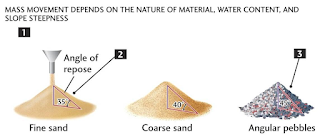Impact of drug administration routes on dosage form design
Drug administration routes play a vital role in determining the effectiveness of a drug in treating a particular medical condition. The way drugs are administered influences the rate, extent, and duration of their therapeutic effect, as well as the safety and tolerability of the treatment. The design of the dosage form is therefore a critical aspect of drug development and must be tailored to the specific route of administration. In this blog post, we will explore the effect of routes of drug administration on dosage form design.
- Oral administration
Oral administration is the most common route of drug administration. It involves taking a medication by mouth and swallowing it, after which the drug is absorbed into the bloodstream through the gastrointestinal tract. Dosage forms designed for oral administration must be able to withstand the acidic environment of the stomach, avoid degradation by digestive enzymes, and be absorbed efficiently in the intestine. Different types of dosage forms such as tablets, capsules, liquids, and powders are designed for oral administration. Each type of dosage form has unique advantages and disadvantages, and the choice of dosage form depends on factors such as patient preference, drug properties, and dosing regimen.
- Parenteral administration
Parenteral administration refers to the injection of drugs into the body through routes other than the gastrointestinal tract. This can include intravenous (IV), intramuscular (IM), and subcutaneous (SC) injections. Dosage forms designed for parenteral administration must be sterile, pyrogen-free, and isotonic to avoid pain, discomfort, and tissue damage. Different types of dosage forms such as solutions, suspensions, and emulsions are designed for parenteral administration. The choice of dosage form depends on factors such as drug properties, injection site, and dosing regimen.
- Topical administration
Topical administration refers to the application of drugs onto the skin or mucous membranes. Dosage forms designed for topical administration must be able to penetrate the skin or mucosa, provide a sustained release of drug, and avoid irritation or allergic reactions. Different types of dosage forms such as creams, ointments, gels, and patches are designed for topical administration. The choice of dosage form depends on factors such as the site of application, drug properties, and desired effect.
- Inhalation administration
Inhalation administration involves the delivery of drugs directly to the lungs through inhalation. Dosage forms designed for inhalation administration must be able to deliver the drug in the form of fine particles or droplets, avoid irritation or cough reflex, and provide a sustained release of drug. Different types of dosage forms such as nebulizers, metered-dose inhalers, and dry powder inhalers are designed for inhalation administration. The choice of dosage form depends on factors such as drug properties, delivery device, and desired effect.
In conclusion, the route of drug administration has a significant impact on dosage form design. Different routes of administration require different dosage forms that can optimize drug delivery, efficacy, safety, and patient compliance. Pharmaceutical companies must consider the unique characteristics of each route of administration and design dosage forms that meet the specific requirements of that route. By doing so, they can create safe and effective drugs that improve patient outcomes.




Great insights! Best Pharma Franchise and Manufacturing Company In India Leading PCD Pharma and Medicine Manufacturer in Biswanath
ReplyDelete& Baksa, Assam